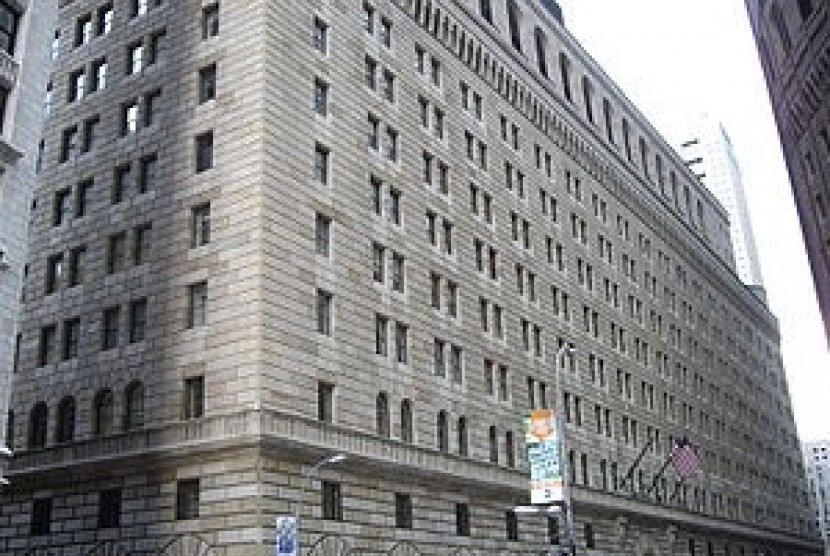REPUBLIKA.CO.ID, NEW YORK -- Wall Street's top banks expected the Federal Reserve to next raise U.S. interest rates in the first quarter of next year, according to a Reuters poll conducted on Wednesday (16/12), after the Fed raised rates for the first time in more than nine years.
A total of 13 of 21 primary dealers, brokerages that deal directly with the Federal Reserve, said the Fed will next raise rates in the first quarter, after it raised the range of its benchmark interest rate by a quarter of a percentage point to between 0.25 percent and 0.50 percent on Wednesday (16/12). The remaining eight dealers said the Fed would raise rates by the second quarter.
The Fed's projections, released with its statement, showed it still anticipates a federal funds rate of 1.4 percent by the end of 2016, which implies four interest rate increases in 2016, or one per quarter. When Reuters last polled primary dealers, the median forecast was for a fed funds rate of 1.125 percent at the end of that year.
Quoted from Reuters, some had expected the Fed to scale back its forecast for the pace of its interest-rate hikes, but the Fed's expected path still implied a more gradual tightening cycle than previous efforts. However, with interest rates near zero, economic growth tepid, and the Fed having undertaken unprecedented stimulus efforts due to the 2008-2009 financial crisis, this cycle of rate hikes looks to be different.
In its statement, the Fed noted international developments and financial markets were among the factors it was monitoring before taking further action.
The Fed's rate hike was the first in nearly a decade, and the first move in policy since it lowered rates to the zero-bound range during the financial crisis.
Steady gains in the labor market have taken the U.S. unemployment rate down to 5 percent. Still, the outlook for inflation was low. In its most recent projections, the Fed lowered its expectation for 2016 core inflation growth to 1.6 percent, down from its previous 1.7 percent expectation.
"As anticipated, the FOMC adjusted its language on inflation, putting actual outcomes on the same level as expected progress. This would slow the pace of rate hikes if inflation keeps surprising to the downside. But the opposite is also true; faster inflation might warrant a faster pace of hikes," wrote economists at Credit Suisse.
The Fed is expected to maintain the fed funds rate through a number of tools, most importantly the interest rate on excess reserves, or IOER, the payment to banks for the 2.5 trillion US dollars or so reserves they currently hold at the Fed. That rate represents the upper end of the fed funds range, at 0.5 percent.
The Fed will also use the overnight reverse repurchase program to drain reserves. That RRP rate represents the floor of the range; it was raised to 0.25 percent.
Since the beginning of the Fed's efforts to provide extraordinary monetary stimulus, the central bank has ballooned its balance sheet to approximately 4.5 trillion US dollars in various types of securities, from about 870 billion US dollars in mid-2007.


